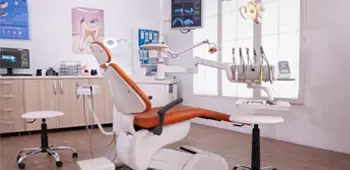How to Create a Home Hygiene Plan for Chronic Patients?
Establishing a Safe Living Space for Immunocompromised Individuals
The Vital Role of Hygiene in Home Care
People living with chronic diseases – especially heart failure, COPD, diabetes, cancer, MS, kidney failure or immunocompromised patients – are more vulnerable to infections. Therefore, hygiene practices outside the hospital, especially at home, are of great importance.
This guide provides a scientific, practical and sustainable hygiene plan for relatives and home caregivers of chronically ill patients.
Recognising Risks: Why is a home hygiene plan essential?
The risk of infection increases in chronic diseases for many reasons:
- The immune system may be weakened
- Tissue damage or wound care may be required
- Invasive devices (catheters, oxygen devices, dialysis connections) may be an entry point for infection
- Drug use may affect the intestinal flora and predispose to opportunistic microbes
Therefore, hygiene practices close to hospital standards should be targeted even in the home environment.
Basic Steps of Creating a Hygiene Plan
The home hygiene plan should not be a one-off, but a system that is constantly updated and becomes a living routine. Here are the basic steps:
1. Categorise Areas
In infection control, no such risk assessment is made for areas in the home. For example, if the patient stays in the living room and that is the contaminated area, it is considered high risk.
2. Prepare a Daily, Weekly and Monthly Cleaning Plan
Hygiene is a matter of routine. It can be planned as follows:
- Daily: Surface wiping, sink cleaning, bedside disinfection, laundry collection, door handles and sockets, which are determined as the most frequently contacted places, should be wiped every day. These areas are included in the surfaces that need to be wiped frequently in cleaning plans in hospitals.
- Monthly Cabinet interiors, curtains, ventilation systems, device filters
Ensuring Continuous Hand Hygiene
The most important chain of transmission in home care is the hands. Regular hand washing or cleaning with antiseptics can prevent 80% of infections.
Hand Hygiene Required Moments:
- Before and after contact with the patient
- Before preparing food
- After the toilet
- After and before bandaging or wound care
- After contact with pets
Hands can be washed with liquid soap or hygiene can be provided with alcohol-based hand antiseptic. The use of gloves is not a substitute for hand washing.
Attention to Contact Surfaces: Most Contaminated Areas
There are many surfaces in the home that are overlooked but harbour germs:
- Television remote control
- Phones and tablets
- Door handles, tap heads
- Refrigerator door, microwave keys
- Light switches
These surfaces should be wiped with surface disinfectants at least 2-3 times a day and disinfected more frequently, especially if the sick person touches these objects.
Laundry and Bed Hygiene
Bed linen, pyjamas and towels of chronically ill patients should be changed regularly and washed at high temperatures. More frequent cleaning is required, especially if there has been contact with wounds, incontinence, sweating or contact with the infected area.
Recommended Practices:
- Bed linen change at least 2 times a week
- Storing dirty laundry in a separate container
- Prefer washing programmes above 60°C
- Drying with tumble dryer or direct sunlight (for antibacterial effect)
Air Quality and Ventilation
Air quality is also important for patients who are constantly at home. Particles such as mould, dust and pollen can worsen the condition in conditions such as COPD and asthma.
What to do
- Provide natural ventilation by opening windows daily
- The filters of air conditioners or air purifiers should be cleaned once a month
- Humidity should be kept between 40-60% (can be checked with a humidity meter)
- Irritants such as smoking and scented cleaning products should be kept away from home
Medical Equipment and Device Cleaning
Cleaning of some medical equipment used at home should not be ignored:
- Devices such as nebuliser, CPAP device, sphygmomanometer, glucometer, oxygen cylinder should be cleaned and disinfected regularly in accordance with the manufacturer’s recommendations.
- Wipe contact surfaces with alcohol or low-level disinfectants
- Parts of the devices such as mouthpieces and masks should be replaced or disinfected if necessary
Visitor Policy and Shoe Hygiene
People living in the same household as chronically ill patients or visiting them can unwittingly become infected. The following rules are therefore recommended:
- Visitors should be asked to wash their hands or ensure hand hygiene with an antiseptic
- Visit duration should be kept short
- Do not enter the house with shoes, especially in the patient’s room
- People with flu or signs of infection should not be allowed in the house
The Balance Between Psychological Hygiene and Hygiene Obsession
Hygiene measures are of course vital, but excessive anxiety can also be a stress factor for chronically ill patients. The hygiene plan must be feasible, sustainable and balanced. It is not possible to eliminate every risk, but regular cleaning and observing basic rules are largely sufficient.
Safe Home, Healthy Living
The hygiene plan to be created for individuals with chronic diseases aims not only to protect against infections but also to provide a quality living environment. The applicability of hygiene at home increases the sustainability of patient care.
It should not be forgotten that not the best disinfectant, but the most consistent cleaning habits are protective.






















